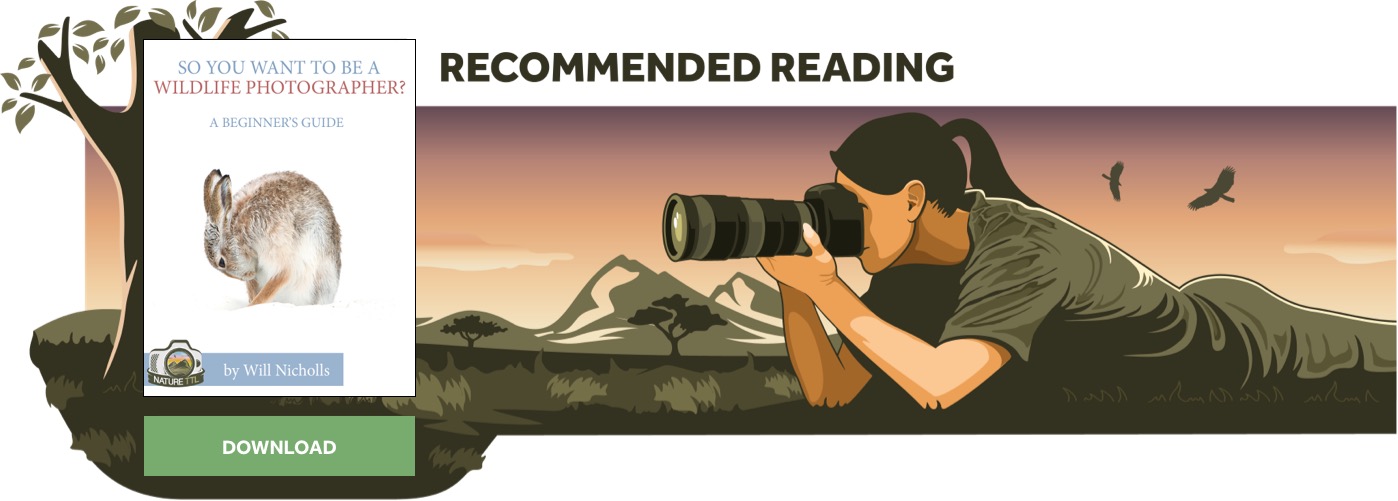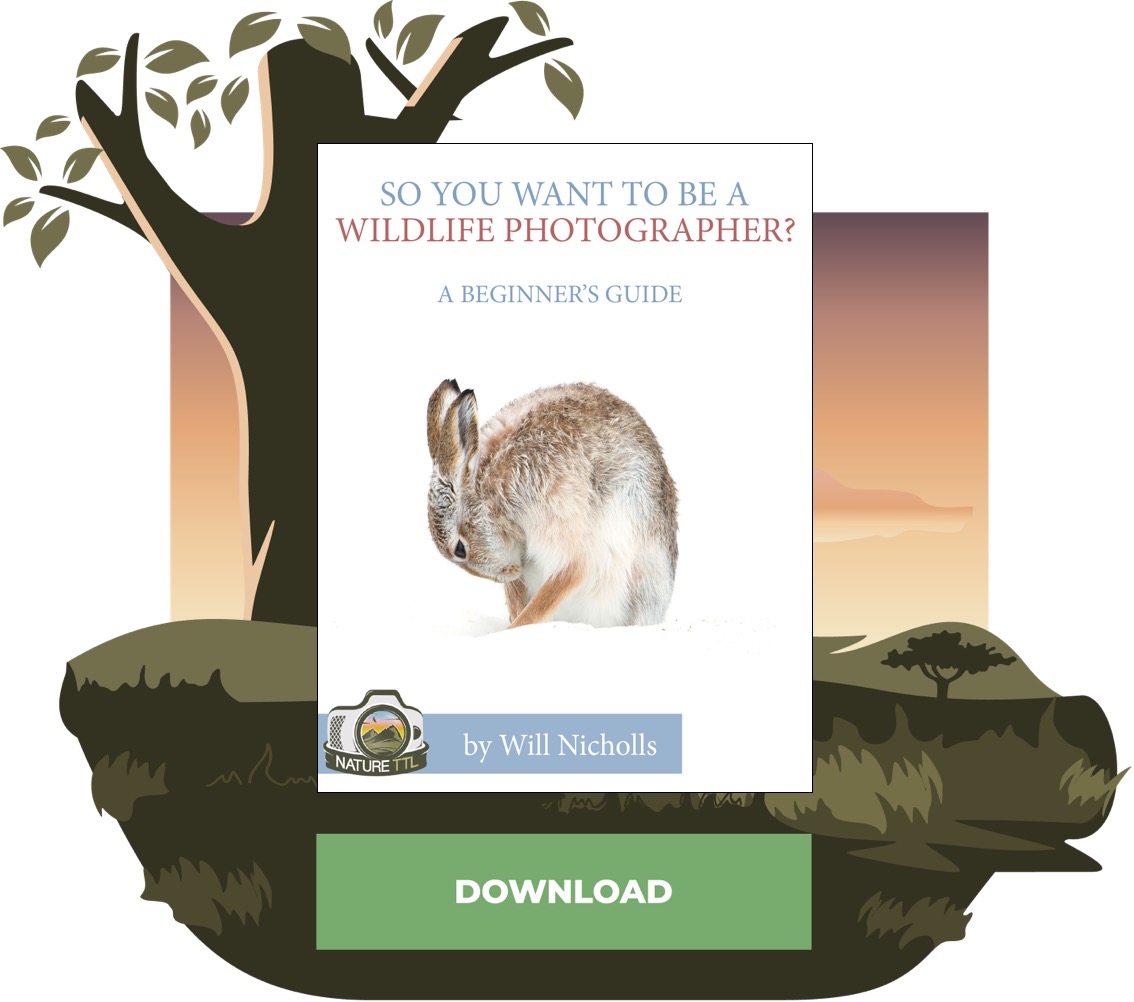Motion Blur Photography: Capturing Movement in Wildlife

While sharp images where the subject is completely frozen often make for compelling photographs, introducing a sense of motion into your wildlife photography can create unique, dynamic, and artistic images that convey a feeling of movement and the raw energy of nature.

This technique isn’t about embracing imperfection; it is about using motion as a creative tool to tell a story and bring your photographs to life.


Why use motion blur in wildlife photography?
When photographing wildlife, the typical goal is to capture the subject in perfect detail – every feather, whisker, or scale in pin-sharp focus.
There are times, however, when you might want to take a different approach. Motion blur introduces a sense of movement, making the image more dynamic and expressive.
By deliberately blurring certain parts of the frame (or sometimes the entire frame), you can evoke the sensation of motion, speed, and fluidity.

This can be particularly effective for subjects such as birds in flight, a deer bounding through a forest, or even for introducing movement into parts of the landscape, such as flowing water.
Motion blur can also be used to transform an image into something more abstract, offering a painterly or impressionistic feel.
Rather than documenting reality exactly as it appears to the human eye, introducing movement can help you create an artistic interpretation of your subject, making your photos stand out in a sea of sharp wildlife images.
Choosing your subject: isolating movement in nature
When incorporating motion blur, the choice of subject and environment is critical. Certain subjects and scenes lend themselves better to this technique than others. Here are a few scenarios where motion blur can be particularly effective.
Flowing water with static animals
Rivers, streams, and waterfalls provide an excellent backdrop for motion blur. If you have a dipper or heron standing in a river, for instance, slowing down your shutter speed will blur the water, creating a soft, ethereal effect while keeping the animal sharp.

This juxtaposition highlights the dynamic nature of the environment against the stillness of the animal.
The subject will need to remain completely stationary throughout the exposure for it to appear sharp, so time your shots carefully and fire off plenty of frames to increase your chance of success.
Read more: How to Photograph Dippers
Birds in flight
Capturing birds in motion with a slight blur of the wings can emphasise their speed and grace.
A sharp eye with blurred wings strikes a balance between capturing the essence of flight and maintaining a recognisable subject.
Read more: 4 Essential Tips for Photographing Birds in Flight
Flocks or herds on the move
When photographing groups of animals, such as wildebeest during migration or a flock of waders in flight, using motion blur can convey the intensity and motion of the herd.

This technique can transform what might be a messy and chaotic scene into a more creative representation of movement.
Read more: Safari Photography – How to Photograph Groups of Animals
Panning
Panning with a moving subject, like a fox or deer against a forest background, or a bird in flight, can create stunning results.
Try to balance the speed of the shutter with the speed of the animal. When done successfully, the subject should remain sharp, but the background will appear as streaks of colour, emphasising speed and motion.
Read more: Panning Technique – Conveying Motion in a Photo
Camera settings for motion blur
The key to creating effective motion blur lies in both your camera settings and the movement of your camera during the exposure.

Achieving the right balance requires careful consideration of your shutter speed, aperture, ISO, and the technique you are using.
Read more: 6 Essential Camera Settings for Wildlife Photographers
Shutter speed
Shutter speed is the most critical setting when it comes to motion blur. The slower the shutter speed, the more exaggerated the motion blur effect will be. The speed you choose entirely depends on how much blur you aim to achieve:
- For subtle movement, such as slightly blurred wings on a bird in flight, try starting with a shutter speed of around 1/250th of a second and work upwards from there until you achieve the desired result.
- For more pronounced blur, such as flowing water or fast-moving animals, experiment with speeds between 1/10th and 1/80th of a second.
- For abstract images where you want the entire scene to appear blurred, go even slower – 1/4th of a second or longer.
There is no right or wrong for any of these scenarios, and each will depend on the subject you are photographing, the speed of its movement, and your own vision.
Aperture and ISO
To compensate for slower shutter speeds, you may need to adjust your aperture and ISO. A smaller aperture will reduce the amount of light entering the lens, enabling slower shutter speeds.

Lowering your ISO will reduce the sensor’s sensitivity to light, which can help when shooting in bright conditions.
- In bright daylight, experiment with apertures of f/11 or higher and the lowest ISO that your camera is capable of.
- In low light, you may need a wider aperture and a higher ISO.
Top Tip: Utilise stabilisation techniques. When shooting with slow shutter speeds, stabilisation is crucial to prevent the entire image from becoming a blurry mess. Using a tripod with a gimbal head can help maintain stability and fluidity, especially when panning.
Read more: Choosing the Optimum ISO Speed
Composition
Mastering motion blur involves more than just adjusting your camera settings; it is also about careful and considered composition.
Here are some composition techniques to enhance the dynamic effect.

Read more: The Essential Guide to Improving Your Wildlife Photography Compositions
Leading lines and motion trails
Use natural lines in the environment, such as the curve of a river, to draw the viewer’s eye towards the subject.
Motion blur can enhance this by extending these lines, creating a sense of direction and speed.
Read more: Composition Tips – Leading Lines and Vanishing Points
Rule of thirds with motion
Placing your subject off-centre using the rule of thirds can help balance the image, especially when incorporating motion blur. If you are panning with a bird in flight, for instance, position it in the top-left or top-right third of the frame, allowing room for the motion blur to trail behind.
Read more: How to Use the Rule of Thirds for Better Photos
Foreground and background blur
Experiment with depth by keeping the subject sharp while blurring the foreground or background. This technique can be effective when shooting through grasses or leaves, giving a dreamy, painterly effect to your image.
Read more: Depth of Field for Beginners – Bokeh, Focus, and more
Using light and colour to enhance motion blur
Light plays a vital role in the success of motion blur photography.

The direction, quality, and colour of light can all influence the mood and impact of your photo.
Read more: Choosing the Best Lighting for Wildlife Photos
Golden hour glow
The warm, soft light during golden hour adds a rich colour palette to your images. When combined with motion blur, it can create a surreal, glowing effect that enhances fluidity and motion.
Read more: How to Photograph Wildlife at Golden Hour
Backlighting
Shooting with the light behind your subject can create stunning silhouettes. The light highlights edges and contours, making the movement stand out against a bright sky.
Birds in flight work particularly well when shooting contre-jour, as the light burns through the wing feathers, creating an almost translucent appearance.
Read more: Backlighting in Wildlife Photography – Creative Use of Light
Reflections and shadows
Use reflections in water or areas of shadow in the background to add another layer of interest to your composition. Blurred reflections can create abstract patterns, adding depth and texture to the image.
Read more: 11 Top Tips for Reflection Photography
Finding the line between abstract and dynamic imagery
There is a fine line between creating abstract blur and capturing a dynamic image with a hint of movement.

Rather than capturing a completely abstract image, you may wish to retain enough detail for the viewer to recognise the subject while using blur creatively to conjure a feeling of energy.
Here are some tips for finding that balance:
- Focus on the eyes: In the vast majority of wildlife photography, the eyes should be the focal point. If you can keep the eyes sharp while allowing other parts of the image to blur, the viewer’s attention will be drawn straight to the subject, grounding the abstract motion.
- Emphasise the subject’s outline: When panning with a moving subject, aim to keep the animal’s outline distinct. This can help maintain a recognisable shape, making the image more dynamic and less chaotic.
- Less is more: Sometimes, a subtle hint of motion is more effective than an extreme blur. Experiment with different shutter speeds and review your images to see which level of motion best conveys the story you want to tell. Experiment with different shutter speeds until you find the one that gives you the most desired results.
Essential equipment for motion blur photography
Achieving consistent results with motion blur often requires specific equipment.

Here are some suggestions for gear that can help:
- Tripod with gimbal or ball head: A tripod provides the stability needed for slow shutter speeds. A gimbal head is particularly useful for panning shots, as it allows fluid movement and smooth tracking of fast-moving subjects. A ball head offers versatility and can be quicker to adjust but might not provide the same fluid motion.
- Monopod: For more mobility, consider a monopod. It offers a good compromise between stability and flexibility, making it easier to follow moving animals while still reducing camera shake.
- Neutral density filters: In bright conditions, slow shutter speeds can easily overexpose an image. Neutral density (ND) filters reduce the amount of light entering the lens, allowing you to use slower shutter speeds even in fairly bright daylight.
- Remote shutter release: Using a remote release can prevent camera shake caused by pressing the shutter button. This is especially useful when shooting subject matter that requires very slow shutter speeds, such as flowing water.
Practice, patience, and experimentation
Mastering motion blur in wildlife photography requires practice and patience. The unpredictable nature of wildlife means that you won’t always get the shot you envisioned, but with time, you’ll develop a sense of when and how to use this technique effectively.

Experiment with different shutter speeds, angles, and compositions. The more you practice, the better you will understand how to anticipate movement and use it creatively.
In conclusion
Motion blur offers a fresh and creative approach to wildlife photography. It allows you to capture not just a moment in time but also a sense of energy and motion.
By experimenting with shutter speeds, composition, and lighting, you will find it possible to create dynamic, unique images that stand out and tell a deeper story.
Whether you are photographing the graceful movement of a bird in flight or the chaotic rush of a river, using motion blur can transform your wildlife photography into art
So grab your camera, head out into the wild, and embrace the blur!





